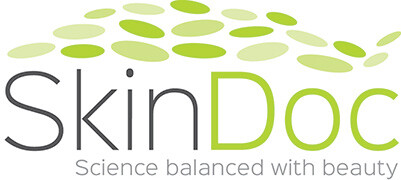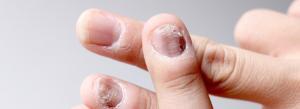Fungal infections are common and can occur in skin hair or nails. An accurate diagnosis is required to avoid misdiagnosis and incorrect treatment. Common fungal infections of the skin include tinea of the skin (tinea corporis), tinea of the scalp (tinea capitis), tinea of the groin (tinea cruris), tinea of the face (tinea facei) and tinea of the hand (tinea manuum), tinea of the feet (tinea pedis) and interdigital tinea.
The most of these cases first-line therapy are topical antifungal creams such as topical imidazoles and topical terbinafine. Second line therapies include oral terbinafine, oral fluconazole or oral itraconazole in pulse regimen.
A kerion is an inflammatory tinea on the scalp which will require oral treatment such as terbinafine as well is antidandruff shampoo and oral antibiotics to treat any secondary bacterial infection as first-line therapy. Second-line therapy will include fluconazole, itraconazole or griseofulvin. Low-dose oral steroids may be required to reduce inflammation and the risk of scarring.
Seborrhoeic dermatitis can be due to Malassezia furfur. Antifungal shampoo should be left on for up to 10 minutes before rinsing to allow antifungal agent to work. It can be applied to scalp as well is skin. In extensive cases oral treatment may be required with fluconazole.
Onychomycosis or fungal infection of the nail may be initially treated with amorolfine, a broad spectrum topical antifungal agent. It disrupts a fungal cell membranes through inhibition of ergosterol synthesis. It is available as an over-the-counter lacquer paint for the treatment of onychomycosis caused by dermatophytes and yeast. Its effectiveness is variable and is unlikely to be effective in extensive onychomycosis. In such cases oral treatment is generally required. The nail needs to be filed down and the preparation needs to be applied once or twice weekly. To be effective treatment needs to be done for an extended length of time. Less than 50% of people achieve a clinical cure if used less than a year. It is generally only effective in white superficial onychomycosis. Most cases of onychomycosis requires oral treatment.
Tinea incognito
This occurs when topical steroids are used to treat cutaneous fungal infections. The red ring of ringworm loses its scaly red appearance and misdiagnosis can occur. Topical steroids can lead to reduction in the immune response and facilitate the spread of the infection. Tinea should be considered in any skin eruption that is scaly or annular. Skin scrapings should be done for fungal microscopy and culture.
Where do dermatophyte infections originate?
The 3 sources of dermatophyte infections are other humans (anthropophilic dermatophytes), animals (zoophilic dermatophytes) and soil, (geophilic dermatophytes). Infections from animals tend to be more inflammatory. It is important to identify the source of infection in order to prevent further infection or spread to other members of the household particularly if the infection was originally from an animal such as a pet guinea pig, cat or dog. Tinea from an animal can lead to facial tinea in a young child through cuddling of the pet or a kerion on the scalp. A kerion may lead to dissemination of the tinea to the child’s classmates.
Fungal folliculitis
Fungal folliculitis can occur in hair bearing areas such as the beard area or the scalp and lead to pustules within the area of tinea. It can be aggravated by the use of topical steroids.
Tinea of the scalp or tinea capitis
Typically there is a patch of hair loss with easily extracted hairs. Different species of dermatophytes can cause differing degrees of scaling and inflammation. There are different clinical presentations which can include
*Alopecia areata type – with discrete patches of hair loss with dull gray hair is coated with a fungal spores (ectothrix infection)
*Black dot tinea-linear patches with hair shafts broken at skin level (endothrix infection) often with minimal scale although a low-grade folliculitis is often seen
*Agminate folliculitis with a sharply defined dull red plaque studded with follicular pustules
*Kerion with a large boggy erosive pustular inflammatory mass that often resembles an abscess. Kerion can lead to scarring from excessive inflammation and permanent hair loss if not treated rapidly.
Seborrhoeic dermatitis
Seborrhoeic dermatitis is due to an inflammatory response to Malassezia furfur. It presents as pale pink ill-defined erythematous rash with loose flaky scale. Dandruff is seborrhoeic dermatitis of the scalp. Eyebrows, nasolabial folds and cheeks and beard area are often involved. He can also present on the central chest as well as the upper back and in the armpits.
Management of seborrhoeic dermatitis of the scalp and skin
Patients are advised to wet the scalp and entire skin. The shampoo is used to lather up the scalp hair and as a body wash to cover the top half of the body including the face, beard, chest, back and armpits. It should be left on for 10 minutes before rinsing off the shampoo to allow it to work. Shampoo should be used every day for 7 to 10 days to eliminate the yeast. Subsequently it should be used twice weekly all over the body shampoo regimen to limit further fungal infection. Resistant cases can be treated with a short course of an oral antifungal agent. The anti dandruff regimen should also be used twice weekly as well.
Pityriasis vesicolor
This is due to a yeast infection, Pityrosporum orbiculare which is a commensal in the skin. When the condition becomes pathogenic the yeast produces hyphae and the yeast is then called Malassezia furfur. Most people who present with the eruption have the pathogenic form of the organism.
Econazole 1% foaming solution can be used for this condition. It should be distributed on wets skin after evening shower and left on overnight. The top of the body should be treated including the scalp. Thereafter our twice weekly anti dandruff shampoo regimen should be instituted to reduce the risk of relapse. However it should be use for an extended length of time. Resistant cases may require oral antifungal treatment.
The key to effective use of antifungal treatment is the initial accurate diagnosis of the fungal infection. Overuse of topical steroids can lead to misdiagnosis and increase incidence of tinea incognito or tinea in disguise. We recommend in resistant cases you see a dermatologist.

